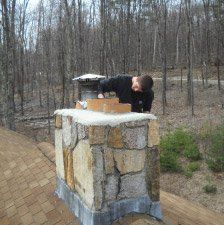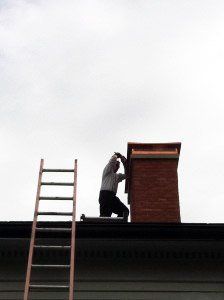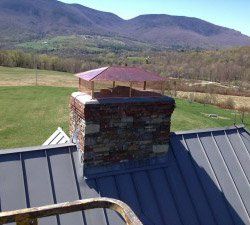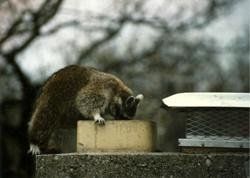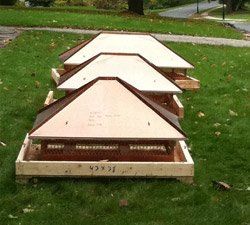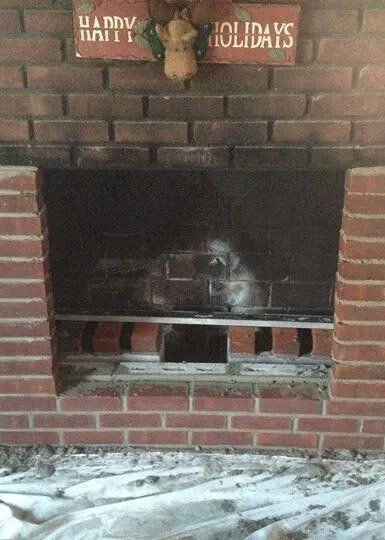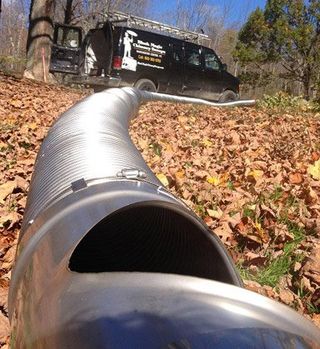Chimney Services
THE BLACK MAGIC DIFFERENCE
Attention to Detail
Black Magic Chimney Sweeps offers a variety of chimney repair services. There are many types of repairs to woodstove, fireplaces, oil furnace flues and chimneys that we cover.
What if I need to cancel my repair job?
Sometimes things happen, we understand and will try to accommodate your scheduling needs. In the event that you can reschedule, then we will gladly apply your deposit to the job at the rescheduled time.
However, if you have placed a deposit on a repair project and you are completely cancelling the project, there may have to be a charge to cover costs incurred to get the project setup. There are administrative, job site and materials costs that we usually absorb in our pricing when you do the work with us. When you cancel and don’t reschedule, these costs cannot be absorbed. We regret this but without treating you fairly and asking you to pay what your project rightfully used of our time and resources, we would then have to unfairly try to pass that along to other customers who don’t deserve that additional charge.
LEAKY CHIMNEY
Leaks Within 10 Feet of Your Chimney?
You Need a Chimney Technician, Not a Roofer
Do you have water dripping from the chimney down into the fireplace? One of the most common reasons for dripping to occur in the chimney is from a damaged crown on top of a masonry chimney. This crown could be cracked or chipped, allowing water to penetrate it. The issue is typically experienced in older homes, especially those built before the 1980’s. Crowns before this time were often sloshed together using surplus mortar. This practice makes them more susceptible to cracks and so they deteriorate more quickly.
The Professional Solution
Unless you feel comfortable enough to climb on top your roof to inspect the crown, contact a professional chimney sweep to assess the situation. They will typically start by performing a complete examination of the area.
- If The Crown Is Still Intact: They may be able to apply polyurethane to fill the cracks and gaps.
- If There Is Visible Damage To The Crown: The chimney professional will need to fix the crown to correct the issue.
Although a chimney cap may seem like a simple solution, it will often not eliminate the water leaking problems that the area is experiencing.
CAPS & GUARDS
Want An Attractive Way To Keep the Rain Out of Your Chimney?
Chimney caps are critical to keep out moisture. Without a cap, rain, snow, and ice can fall directly into the flue. As temperatures fluctuate throughout the winter, this water freezes and thaws, causing damage to interior chimney walls.
Over time, cracks form in the chimney lining. If untreated, these cracks may spread to the masonry itself, compromising the integrity of the whole chimney structure.
What Do Squirrels, Chimney Swifts, and Chipmunks Have in Common?
Birds and rodents love to nest in chimneys—a few twigs, a handful of leaves, and pretty soon you’ve got a nice critter condo in your chimney. Compared to trees and other common nesting areas, chimneys provide cozier places for nuisance animals to escape the elements.
Stop the infiltration with a properly installed chimney cap. Birds and squirrels not only annoy you with their constant scraping of claws, they can do real damage to your chimney. Nests clog up flues, causing smoke to back-up into your home and putting you at risk of a chimney fire.
Interested in Minimizing Fire Risks?
As anyone who has built a fire can tell you, small burning scraps have a tendency to float upward and outward. Most modern chimney caps have a screen or mesh that act as a spark arrestor, keeping those “burning floaties” safely contained. This is the same essential set-up as the fireplace screen that keeps sparks and embers neatly in your fireplace. Why risk those sparks escaping through your chimney top and landing on neighboring leaves or other combustible surfaces?
SMOKING CHIMNEY
Constant smoking problems are often the easiest to diagnose while being the hardest to correct. Many constant smoking problems are the result of improper construction or design and may require extensive modification of the chimney system to correct. Below is a description of the common design problems which may lead to smoking problems.
Constant smoking problems
Damper is Closed
Check to see if the damper is open or functioning properly. More people overlook this than you might think
Inadequate Air Supply
Open a window or door as close to the fireplace as possible. If the smoking lessens or stops when the door or window is open, the problem is inadequate air supply.
The Chimney Flue is Obstructed
Extinguish the fire and look for obstructions. Birds nests are commonly found in chimneys and may often be large enough to restrict flow. Soot and creosote can plug or restrict the airflow of others. If the chimney is older, fallen brick or mortar may be obstructing the flue. Any obstructions must be removed. A blocked chimney is a fire hazard and should never be used until completely cleaned and inspected. Chimneys blocked as a result of structural failure should be condemned and rebuilt.
Improper Construction or Design
It is possible that a masonry chimney was poorly designed. If your fireplace consistently smokes and none of the ideas presented above work, it may be that your chimney has design flaws. Please contact our office about this.
LINERS
Stainless Steel, Metalbestos, Insulated, Rigid, Insulated, and more
When a chimney has physical problems or performance issues (like backdrafting), one potential solution is installing a stainless steel chimney liner. Since rebuilding a masonry chimney would be significantly more expensive, a liner is often the most cost-effective approach. Because they are often sold with long-term warranties, investing in a quality chimney liner pays off off in the long term.
Liner-InstallationThere are different styles of liners–stainless steel, metalbestos, insulated, rigid, insulated, etc–and a time and a place for each of them. We have a tremendous amount of knowledge about the lining systems and we can help you find the right fit for you.
You should always ask about your options and why your chimney sweep is suggesting a particular product. If you are concerned about the quality of the information provided, we recommend calling a CSIA certified sweep for advice (and an alternative price).

